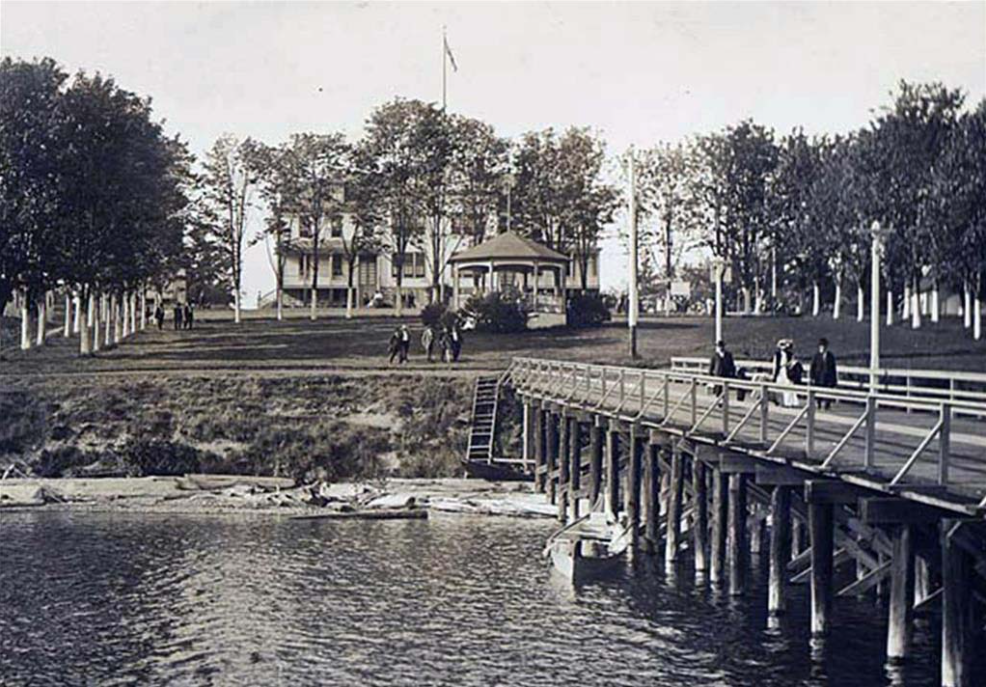Spring’s Return
By Anonymous
Annotations by Karen Kilcup

Icy winter has departed, And the balmy spring has come, The birds sing forth their melody, And the bees begin to hum. The bobolink now sounds his note,[1] His song so clear and sweet, He tells us of the balmy spring, We’ve longed so much to greet. The fields have changed their dark gray robe For one of loveliest green, And on the hills and in the vales The flocks and herds are seen. Out on the fresh green sward The hen now leads her tender brood, And seeks for them with anxious care The choicest bits of food. The gentle river now is studded With many a white-sailed craft, That swiftly o’er its bosom The genial breezes waft. But summer soon will come, And to us she will bring More blessings and more pleasures Than did the welcome spring. Now let us well remember, That their beauty cannot last, For when cometh bleak December, He’ll destroy it with his blast.
Anonymous. “Spring’s Return.” The Youth’s Companion 11, no. 1 (April 1882): 272.
[1] Notable for its song, the Bobolink is a black and white bird with a yellow “cap.” ItDuring migration it occupies much of the southeastern quarter of the United States, and it summers (and breeds) in the U.S. Northeast, upper Midwest, and much of southern Canada. It rarely appears in the Tulalip region. Mentioning the bird here suggests that a teacher who came from the eastern part of the country may have described it to the author, or that the author read about it.
Contexts
Begun in 1881, The Youth’s Companion—a name that many nineteenth-century publications shared—was a monthly student magazine that published articles written by pupils of the Catholic-run boarding school located on the Tulalip Indian Reservation. A federally recognized tribe located in the mid-Puget Sound area, the Tulalip Tribes received reservation lands—22,000 acres—in 1855, with its legal boundaries established by President Ulysses S. Grant in 1873. According to the Tulalip Tribes website, “it was created to provide a permanent home for the Snohomish, Snoqualmie, Skagit, Suiattle, Samish, and Stillaguamish Tribes and allied bands living in the region.”
Nineteenth-century Indian boarding schools aimed to assimilate Native Americans into white culture. They separated children from their families, required students to dress like white Americans, and prohibited them from speaking their language. They also emphasized so-called “industrial” training: boys learned agricultural and industrial skills, while girls learned how to cook, sew, and clean a household. Students were often expected to become servants or to provide manual labor help for whites.
Like many contributions to Native American student periodicals, this poem was published anonymously.Students living on reservations during this time often received educations governed by white religious authorities who emphasized moral training. In describing the spring, this poem mirrors much of the nineteenth century’s natural history writing for children. Its emphasis on agriculture indirectly demonstrates the U.S. official policy of eliminating these tribes’ traditional lifeways of fishing, hunting, and gathering.
Resources for Further Study
- Kalliber, Kim, “Seattle Continues Healing ‘Deep Wounds’ With Boarding School Resolution,” Tulalip News, October 20, 2015.
- King, Marsha. “Tribes confront painful legacy of Indian boarding schools,” Seattle Times,February 3, 2008.
- Marr, Carolyn J. “Assimilation Through Education: Indian Boarding Schools in the Pacific Northwest,” University of Washington Libraries Digital Collection. This article includes historical contexts and features “A Typical Daily Schedule.”
- ———. “Between Two Worlds: Experiences at the Tulalip Indian Boarding School, 1905-1932,” Hibulb Cultural Center & Natural History Preserve.
Contemporary Connections
“Tulalip History Minute 04—The Tulalip Indian School presented by Mary Jane Topash,” the Tulalip History Project. Provides Tulalip-sponsored background on the tribe.
“Editorial: Getting to the truth of Tulalip boarding school,” September 26, 2021, HeraldNet (Everett, Washington). Caution: includes information about abuses at the school.